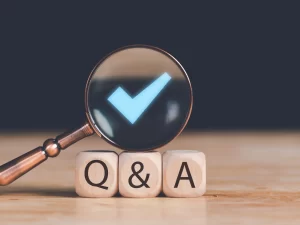Personal leadership training is a transformative journey that empowers individuals to take charge of their lives and inspire others. As someone who has undergone extensive personal leadership training and witnessed its profound impact, I’m excited to share 15 powerful strategies that can help you become an exceptional leader in both your personal and professional life. In this comprehensive guide, we’ll explore various techniques and approaches that form the cornerstone of effective personal leadership training.
Self-Awareness in Personal Leadership Training
The foundation of personal leadership training lies in developing strong self-awareness. This involves:
- Identifying your core values and beliefs
- Recognizing your strengths and weaknesses
- Understanding your emotional triggers and reactions
For example, I discovered through self-reflection exercises that my core value of integrity greatly influences my decision-making process. This awareness has helped me stay true to my principles in challenging situations.
Vision Setting in Personal Leadership Training
A crucial aspect of personal leadership training is learning to set a compelling vision for yourself and your team. This includes:
- Defining long-term goals and aspirations
- Creating a clear and inspiring vision statement
- Aligning your actions with your vision
I found that creating a vision board helped me visualize my goals more clearly, making them feel more achievable and motivating.
Emotional Intelligence in Personal Leadership Training
Developing emotional intelligence is a key component of personal leadership training. This involves:
- Recognizing and managing your own emotions
- Empathizing with others’ feelings and perspectives
- Navigating interpersonal relationships effectively
For instance, practicing active listening has significantly improved my ability to understand and connect with team members, leading to better collaboration and outcomes.
Communication Skills in Personal Leadership Training
Effective communication is paramount in personal leadership training. Focus on:
- Developing clear and concise messaging
- Improving your public speaking abilities
- Mastering the art of giving and receiving feedback
I’ve found that regularly practicing impromptu speaking has boosted my confidence in expressing ideas clearly and persuasively.
Decision-Making Techniques in Personal Leadership Training
Personal leadership training often includes honing decision-making skills. This might involve:
- Learning various decision-making models
- Practicing critical thinking and analysis
- Developing the ability to make decisions under pressure
For example, using the SWOT analysis technique has helped me make more balanced and informed decisions in both personal and professional contexts.
Time Management in Personal Leadership Training
Effective time management is crucial in personal leadership training. Strategies include:
- Prioritizing tasks using methods like the Eisenhower Matrix
- Implementing productivity techniques like the Pomodoro Method
- Delegating tasks effectively
Personally, adopting a time-blocking approach has significantly increased my productivity and reduced stress levels.
Resilience Building in Personal Leadership Training
Developing resilience is a vital aspect of personal leadership training. This involves:
- Cultivating a growth mindset
- Learning stress management techniques
- Developing coping strategies for setbacks
For instance, practicing mindfulness meditation has enhanced my ability to stay calm and focused during challenging situations.
Conflict Resolution in Personal Leadership Training
Personal leadership training often includes conflict resolution skills. Key aspects include:
- Understanding different conflict styles
- Developing negotiation skills
- Learning to facilitate difficult conversations
I’ve found that using the “DESC” script (Describe, Express, Specify, Consequences) has been particularly effective in addressing conflicts constructively.
Team Building in Personal Leadership Training
Effective team building is a crucial skill in personal leadership training. This might involve:
- Understanding team dynamics and stages of team development
- Facilitating team-building activities and exercises
- Fostering a positive team culture
For example, implementing regular team retrospectives has significantly improved collaboration and morale within my teams.
Continuous Learning in Personal Leadership Training
Embracing continuous learning is essential in personal leadership training. This includes:
- Developing a reading habit focused on leadership and personal development
- Attending workshops and seminars
- Seeking mentorship opportunities
I’ve made it a habit to read at least one leadership book per month, which has consistently provided new insights and strategies to apply in my leadership journey.
Ethical Leadership in Personal Leadership Training
Personal leadership training often emphasizes the importance of ethical leadership. This involves:
- Clarifying your personal and professional ethics
- Making decisions based on ethical principles
- Leading by example in ethical behavior
For instance, creating a personal code of ethics has guided me in making difficult decisions with integrity and consistency.
Innovation and Creativity in Personal Leadership Training
Fostering innovation and creativity is a valuable aspect of personal leadership training. This might include:
- Learning creative problem-solving techniques
- Encouraging a culture of innovation within your team
- Developing your own creative thinking skills
I’ve found that regularly practicing brainstorming techniques like mind mapping has enhanced my ability to generate innovative solutions to complex problems.
Personal Branding in Personal Leadership Training
Developing a strong personal brand is often part of personal leadership training. This involves:
- Defining your unique value proposition
- Cultivating a consistent professional image
- Leveraging social media and networking opportunities
Creating a personal mission statement has helped me align my actions and decisions with my personal brand, enhancing my leadership presence.
Work-Life Balance in Personal Leadership Training
Maintaining work-life balance is crucial in personal leadership training. Strategies include:
- Setting clear boundaries between work and personal life
- Practicing self-care and stress management
- Prioritizing personal relationships and hobbies
Implementing a “digital sunset” routine, where I disconnect from work-related technology in the evening, has significantly improved my work-life balance and overall well-being.
Adaptability and Change Management in Personal Leadership Training
Developing adaptability is essential in personal leadership training. This involves:
- Embracing change and uncertainty
- Developing flexibility in your leadership style
- Learning change management techniques
For example, adopting the “ADKAR” model (Awareness, Desire, Knowledge, Ability, Reinforcement) has helped me navigate and lead organizational changes more effectively.
Personal leadership training is a transformative journey that empowers you to become the best version of yourself and inspire others to do the same. By implementing these 15 powerful strategies, you can develop the skills and mindset necessary to lead with confidence, integrity, and effectiveness.
Remember, personal leadership training is an ongoing process. It requires consistent effort, self-reflection, and a willingness to step out of your comfort zone. As someone who has experienced the profound impact of this journey, I can attest to its power in shaping not only your professional success but also your personal fulfillment and overall life satisfaction.
Embrace this journey of growth and transformation. The skills and insights you gain through personal leadership training will serve you well in all aspects of life, helping you navigate challenges, inspire others, and create positive change in the world around you.
Frequently Asked Questions:
-
Q: How long does it typically take to see results from personal leadership training?
A: The timeline for seeing results can vary depending on individual circumstances and the intensity of training. Some people may notice improvements in their leadership skills within a few weeks, while deeper, long-lasting changes often develop over several months or even years of consistent practice and application.
-
Q: Is personal leadership training only for those in management positions?
A: No, personal leadership training is beneficial for everyone, regardless of their current position. It focuses on developing self-leadership skills that are valuable in all aspects of life, both personal and professional. These skills can help you take charge of your own development and positively influence others, even without a formal leadership title.
-
Q: Can personal leadership training help with specific challenges like public speaking anxiety or conflict avoidance?
A: Absolutely. Personal leadership training often addresses specific challenges like these. For example, it might include techniques for managing public speaking anxiety, such as visualization exercises or gradual exposure. For conflict avoidance, training might focus on developing assertiveness skills and conflict resolution techniques.
-
Q: How is personal leadership training different from traditional leadership training?
A: While there’s overlap, personal leadership training tends to focus more on self-development and leading oneself before leading others. It often includes a stronger emphasis on self-awareness, emotional intelligence, and personal growth. Traditional leadership training might focus more on team management and organizational leadership skills.
-
Q: Can I engage in personal leadership training on my own, or do I need a coach or formal program?
A: While many aspects of personal leadership training can be self-directed through reading, online courses, and personal practice, working with a coach or participating in a formal program can provide structured guidance, personalized feedback, and opportunities for practice that are difficult to replicate on your own. A combination of self-study and professional guidance often yields the best results.






